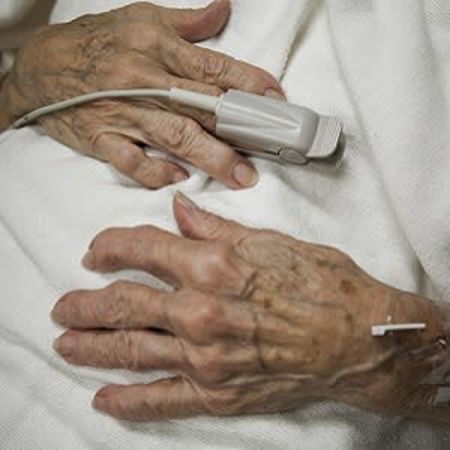In seriously ill older adults or those near the end of life, acute respiratory failure is a common cause of hospitalisation. These hospitalisations are generally complicated by distressful respiratory symptoms and transitions that require the use of high-intensity, high-risk interventions, including invasive mechanical ventilation (IMV) and non-invasive ventilation (NIV).
Trends in both invasive and non-invasive mechanical ventilation during the last two decades show a substantial increase in the use of non-invasive ventilation and a slight increase in the use of invasive ventilation. This suggests a shift in the way ventilatory support is being provided to patients at the end of life. However, while the use of NIV in older adults may have increased, evidence supporting its use across serious illnesses still remains vague.
In a recent study, Sullivan et al. (2020) analysed patterns and trends in NIV and IMV over the last 17 years in 2.5 million patients who were hospitalised in the last thirty days of life. Their findings show a 9-fold increase in the use of non-invasive mechanical ventilation between 2000 and 2017 and a relatively stable increase in the use of invasive mechanical ventilation during the same period. The trends show a greater increase of NIV in older patients with a 10-fold increase in patients with congestive heart failure (CHF), a 5-fold increase in patients with chronic obstructive pulmonary disease (COPD), and a 9-fold increase in patients with cancer and dementia at the end of life. While the use of NIV increased in CHF and COPD patients and was reciprocated by a decrease in the use of IMV, the same was not observed in cancer and dementia patients, who experienced a slight increase in IMV use as well.
The shift towards the use of non-invasive mechanical ventilation to deliver positive pressure ventilation is largely driven by the need to avoid potential complications of invasive mechanical ventilation. Clinical evidence also supports the use of non-invasive mechanical ventilation in patients with acute hypercapnic respiratory failure with COPD, acute cardiogenic pulmonary oedema, acute hypoxaemia in immunocompromised patients, and in select patients after surgical procedures to facilitate liberation from invasive mechanical ventilation. However, clinical guidelines clarify where non-invasive mechanical ventilation should be avoided, for example, in patients who are medically unstable or agitated and those who are unable to cooperate with the NIV mask or who cannot protect their airway or clear their secretions. NIV is also not recommended in patients with facial trauma or anatomical abnormalities that preclude proper mask fit. But the trends and the increasing use of NIV indicates that clinicians might be practicing beyond the guidelines and may be using NIV broadly in seriously ill older adults at the end of life.
Clinical evidence on the use of NIV in older patients with de novo acute hypoxemic respiratory failure without a previous diagnosis of chronic respiratory disease (i.e., pneumonia or acute respiratory distress syndrome) remains vague. The European Respiratory Society and the American Thoracic Society have also not made any recommendation for its use in such patients and provide only a conditional recommendation for the palliative use of non-invasive mechanical ventilation. Hence, caution should be exercised. In particular, the increasing use of NIV in older adults with advanced dementia is an area of concern.
Overall, the use of NIV in seriously ill older adults should be based on careful patient selection and should be used only if clinical evidence supports favourable patient outcomes. Evidence is vague and more research is required.
Source: JAMA
Image Credit: iStock



























